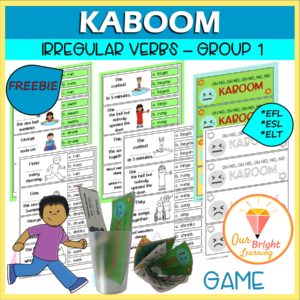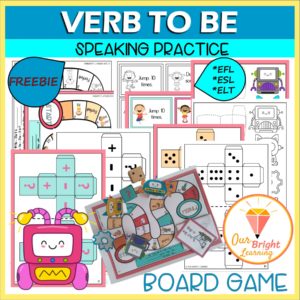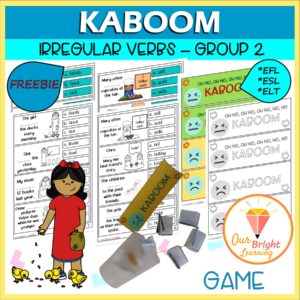How to Design a Speaking Activity for Your Young Learners – Part 1
Skills
Photo : saeed karimi – Unsplash
Have you ever prepared an amazing ESL or EFL speaking activity or lesson plan, with appropriate input and resources, just to end up realizing that your young learners aren’t able to answer a simple question without your support?
Yeah, it has also happened to me, and truth be told, it made me doubt my skills as a good ESL or EFL teacher.
However, despite all that disappointment, I decided to continue searching about speaking activities, and in doing so I found a way to make my ESL and EFL speaking lessons and tasks much more effective. This search led me to a book called Teaching Languages to Young Learners written by Lynne Cameron. This has helped me to expand my mind on the subject, make my own interpretation, and adapt her teaching to my life as an ESL and EFL teacher.
These are some of my FREE speaking materials. Download them and help your children with their speaking!
Why is speaking the most difficult skill?
Interesting question! Well…
Cameron states that for an ESL and EFL student, producing language is far more complex than understanding it. That is the reason why it is necessary to identify the five demands our students have when they are asked a “simple question”.
-
Cognitive Demands: When a child is asked a question, he or she must have specific knowledge about the topic. For example, if I ask “Could you tell me more about your favorite animal?”, the child must first think about an animal they know. This information relies on the previous knowledge the students have and varies from student to student.
-
Language Demands: As you might be thinking, the student also needs to choose an animal he or she can talk about. They must be sure they know the appropriate words, phrases, and structures to use to describe the animal.
-
Discourse Demands: They need to speak for a while and go beyond basic words. This implies the construction of a complete and understandable discourse, including the appropriate use of transition words and connectors.
-
Interactional Demands: They need to make sure their audience (classmates and teachers) understand their ideas. Learners must deal with the pressure of fulfilling their listeners’ expectations.
-
Involvement Demands: The learner needs to be motivated enough to create an interesting description of the animal. Remember, if a child is not interested in the task, they won’t get involved, and subsequently their production quality will be poor.
But Adriana, how can we deal with all this while choosing or creating an ESL or EFL speaking activity?
My dear friend, fortunately Cameron had also described the ways in which these demands can be foreseen, planned and supported by teachers; doing this will help us get the best possible ESL and EFL speaking practice from our students.
This is one of my FREE speaking materials. Download it and help your children with their speaking!
How to choose or create your speaking activities
According to Cameron, the cognitive demand is supported by the freedom of choice given to the learner. For instance, this task allows the student to choose their favorite animal, instead of an animal selected by the teacher. This helps the student to pick an animal he or she has previous knowledge about.
Great Adriana, but how can we make sure they are going to use the expected language?
Well, the language demand is one of the most important demands for teachers, and this is because it directly shows the results of our ESL or EFL teaching intervention. About this, the author states that this will be supported by the correct use of the input we provide to our pupils; for example, the earlier reading of a text. Additionally, I would say that, as teachers we must make sure students notice certain phrases and structures that can be adaptable to new and original discourses. This can be done by analyzing the text in depth (by underlining the sentences the writer used to describe each animal, by explaining and clarifying new vocabulary, and by modeling the task ourselves). This will definitely guide and support our learner speech, and will guarantee a minimum amount of tools for all our students, even the weakest ones.
But Adriana, you say, what about the discourse demand? They are supposed to have an extended talk on the topic, how can we guarantee that?
Well, in this respect Cameron states that a wide and varied effort on the topic of discussion is necessary, and as you can see, this idea is closely related to the efficient exploitation of the input material and the interactional demand.
When developing our speaking activity planning, we must always provide our ESL and EFL students with enough work on the input material; they must read/listen, understand, and analyze these texts in different and varied manners. They must find the gist and details of the text, they must highlight and circle the mains ideas, identify parts of speech, and point at the images of new vocabulary, etc.
In addition, as teachers we must always model or show a model of the expected language. Then, we must allow pupils to interact with their peers by asking and answering questions. All these strategies may increase not only the students’ knowledge and confidence, but also the length of their discourse.
Last but not least, the author also points out the involvement demand which, from my point of view, can either cause your learners’ speaking skills to skyrocket or plummet. The more interesting and related to the students’ inner world the task is, the better the chances of high-quality output being received. Therefore, when designing your ESL and EFL speaking lessons or tasks, make certain you choose appealing topics related to the students ages and interests. Doing so will awaken their innate desire of communication and will allow them to advance in their oral skills development.
The following is a FREE simple role-play about the days of the week.
 Photo: saeed karimi – Unsplash
Photo: saeed karimi – Unsplash









Discussion about this post